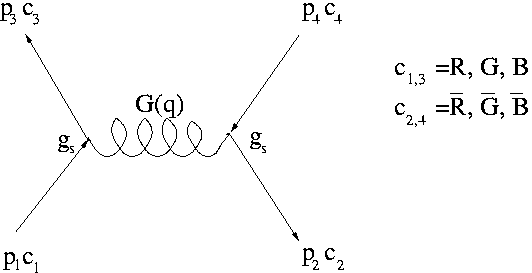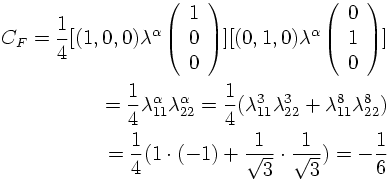The basic Feyman rules for QCD can be discussed by considering the scattering between a quark and an anti-quark due to one-gluon exchange.
To ease the discussion the flavors of the two quarks are assumed to be different. In this case, only a t-channel gluon-exchange has to be considered.
The corresponding Feynman diagram is depicted in


The amplitude is like the electron-positron scattering amplitude in QED with the replacement: α -> CFαs
with CF being an additional colour factor:

There are two possibilities for CF:
1) CF for colour octet structure
As an example the scattering of a quark with colour R and of an anti-quark with colour anti-G is considered. Since colour charge is conserved the quark in the final state has the same colour as the one in the initial state. The same holds for the anti-quark. The explicite calculation yields:

2) CF for colour singlet structure
In this case, the quark-anti-quark pair is in a singlet state:


SUMMARY:
The one-gluon exchange potential (at short distances!) reads

For colour singlet mesons the potential is attractive at short distances.
This consideration does not apply to long distances. Lattice QCD calculations are able to calculate the QCD potential at long distances showing that the potential for a colour neutral quark-anti-quark pair is also attractive at long distances!